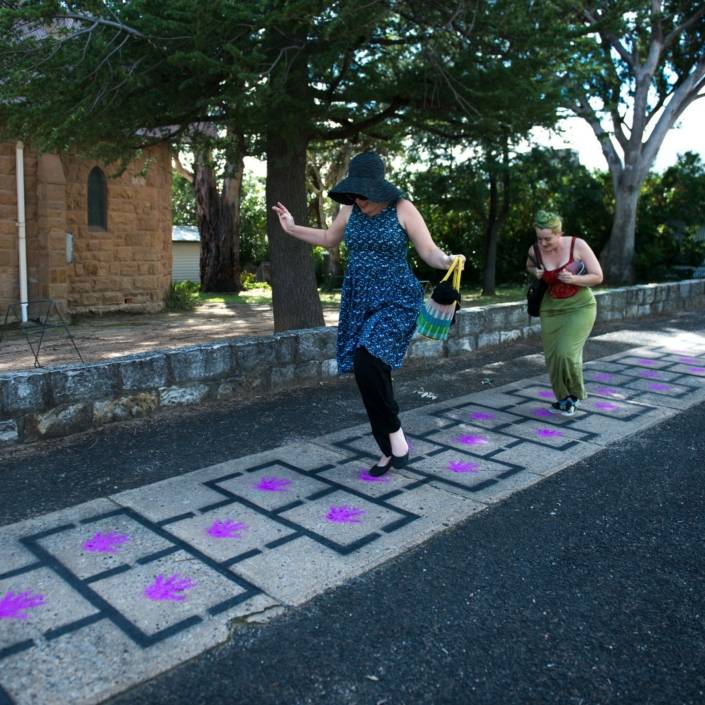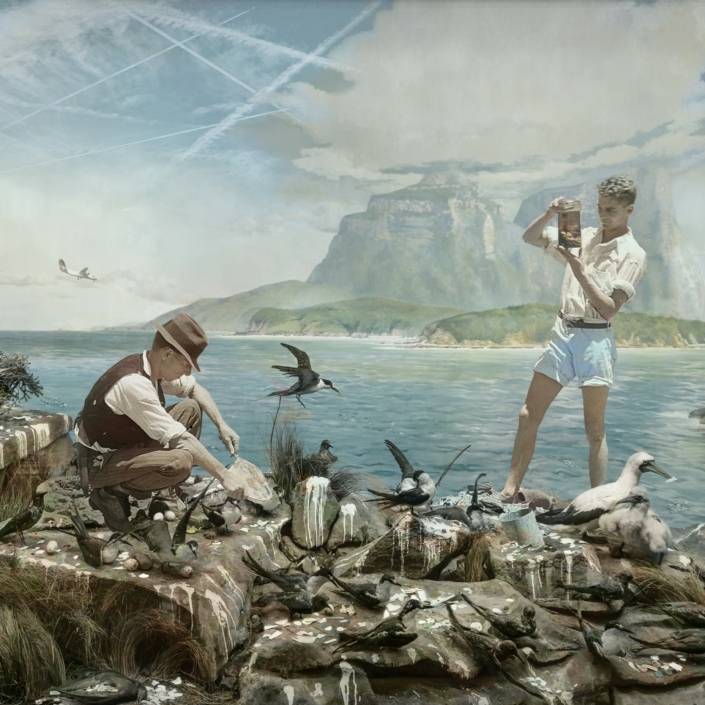Measuring Up
With seemingly endless costs and nightmare-inducing logistics, we ask: why do Australian and New Zealand galleries even bother to attend international art fairs?
Words: Tai Mitsuji
The art world doesn’t really exist. It’s a dream, a fantasy, which people often refer to, yet never really experience. Today, we might be better served describing art worlds: silos of culture that each purport to represent a centre, despite being scattered throughout the globe. One of the most cogent cases congregates in Hong Kong for a few short days in March.
Attending Art Basel Hong Kong (ABHK) allows Australian and New Zealand galleries to collapse the distance between themselves and the international collector. It allows the antipodes – the area consigned to the bottom of the world map – to become part of the centre. “Australia is so remote in a lot of ways, but all of our artists want to be out in the world,” says Roslyn Oxley of Sydney’s Roslyn Oxley9 Gallery. “They need to be put in grand shows around the world.” What does that mean in an international fair context? “The first thing is that 65,000 people go [to ABHK], so you’re getting a great many sets of eyes on work that ordinarily wouldn’t be seen,” explains Andrew Jensen, director of Fox Jensen Gallery in Sydney and Fox Jensen McCrory Gallery in Auckland. “We’re actually all interested in looking, both voyeuristically and pragmatically, at what other galleries are doing. It’s a resource across lots of levels.”
Yet the utility of the fair extends far beyond the few days it occupies. “I think that you have to think of the bigger picture; the long game,” observes Anna Jackson, director of Auckland’s Gow Langsford Gallery. “The reality is that if you went to one art fair, and that were your one and only time, perhaps you wouldn’t go back – but I wouldn’t judge the success of a fair until probably six months [later].” Jackson is, of course, referring to the conversations that continue after the fair has finished. “We had people who we met in Hong Kong that flew to New Zealand to look at a young artist that we hadn’t even taken to the fair,” she recalls. “You really never know who you are going to meet.”
Yet the immediate and delayed benefits of the fair all come at a price. The perennial struggle for any gallery travelling to an international art fair is governed by a scale weighed down on one end by the seemingly endless lists of costs, and offset on the other side by exposure, sales and, more than anything else, relationships. “To justify going financially is quite mad – but you just do it,” Oxley observes. “To take one flat painting overseas can cost $8,000. And if it needs to be sent upright, it jumps to $30,000. The transport costs are extraordinary.”
Indeed, several of the other gallerists who I spoke to suggested that the expense of attending the fair reached into six-digits. “I’m sure you could do it for a bit less, but I think that if you’re paying that much in stand costs you may as well pull out all the stops,” explains Jackson. There seems to be a distinct tension, in many of the discussions that I have, between the importance of presenting truly substantial art and the ever-present cost that accompanies this presentation. The vision versus its valuation.
But the fair represents more than just an outlaying of money; every stand represents an investment of time. Just as a 45-minute album can reflect hundreds of hours in a music studio, five days at Art Basel corresponds to months of planning. “It works on a year-long process,” says Jackson. “You’ve just finished one fair and the applications are due for the next.”
When I ask Jensen about the logistics of the fair, he describes something that sounds more akin to the mechanics of a Swiss watch than a delivery system. “We’ve got work coming from Italy, Germany, America, the UK and Australia, which all has to arrive at one point on the map within a few days,” he explains. “We are packing and transporting on almost every continent for it all to coalesce.”
So is it – the time, the money, the planning, the packing, the unpacking: the Swiss watch – all worth it? When I reach out to a former Basel attendee, Jan Minchin, director of Tolarno Galleries, she emails me back with an almost philosophical response: “Art Basel HK is an option. One option. It’s a heady affair, offering a fast and furious one-stop opportunity to showcase art. Maybe it would be good to present work differently. Everything changes.”
Of course, she is right. But so is everyone else. If you see value in the fair then you can undoubtedly find it. And if you do attend you can, for a few short days, lay claim to that most rarefied of spaces: the art world.
Image: Vincent Namatjira, Vincent & Donald (Indulkana), 2018, detail. Acrylic on canvas, 122 x 155cm. Courtesy: the artist and This Is No Fantasy, Melbourne.









